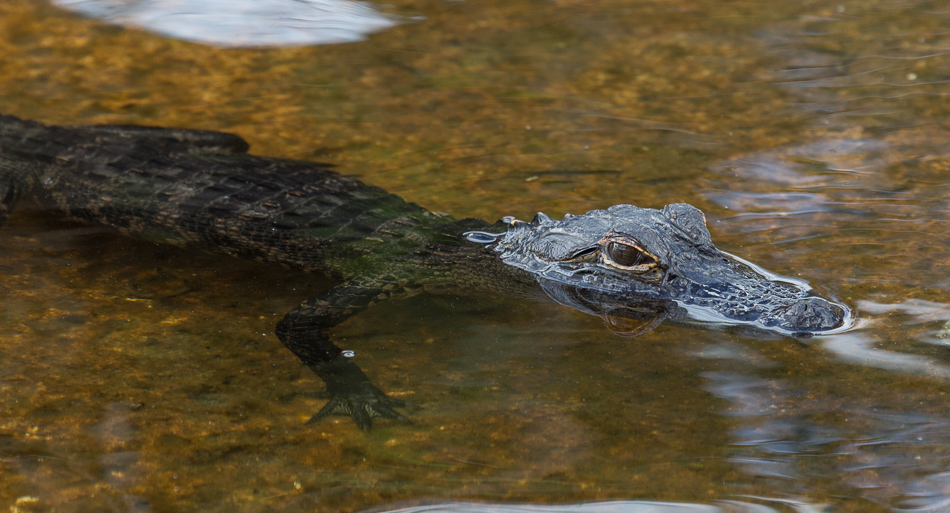The conditions must have been good for prescribed burns in the last few days, because another of the parks we visited was partially closed due to burning. We arrived early at Hickory Lake Scrub to find smoke drifting through the trees and across the road. The second entrance, that we’ve never walked around and wanted to try out, was closed due to the burn, so we took the smokey but open short loop that we walked a year or two ago. It was too early and cool to see any scrub lizards, but there were many birds flitting around. The scrub is an interesting, desert-like habitat, identified by “the absence of a tree canopy; the absence of a continuous vegetative ground cover; and the absence of longleaf pine (Pinus palustris), wiregrass (Aristida beyrichiana), and turkey oak…. Most scrubs occur on white sand and patches of bare sand with or without scattered clumps of ground lichens.” (pdf) (by quoderat)

There are lots of prickly pear along this trail, with all of their spines intact. (by zanna)

Continuing on to Lake June-in-Winter Scrub State Park, we found a lovely, but short nature trail that crosses a small creek. While there was some scrub oak away from the lake and creek, the parts we walked weren’t what I associate as true scrub. (by zanna)
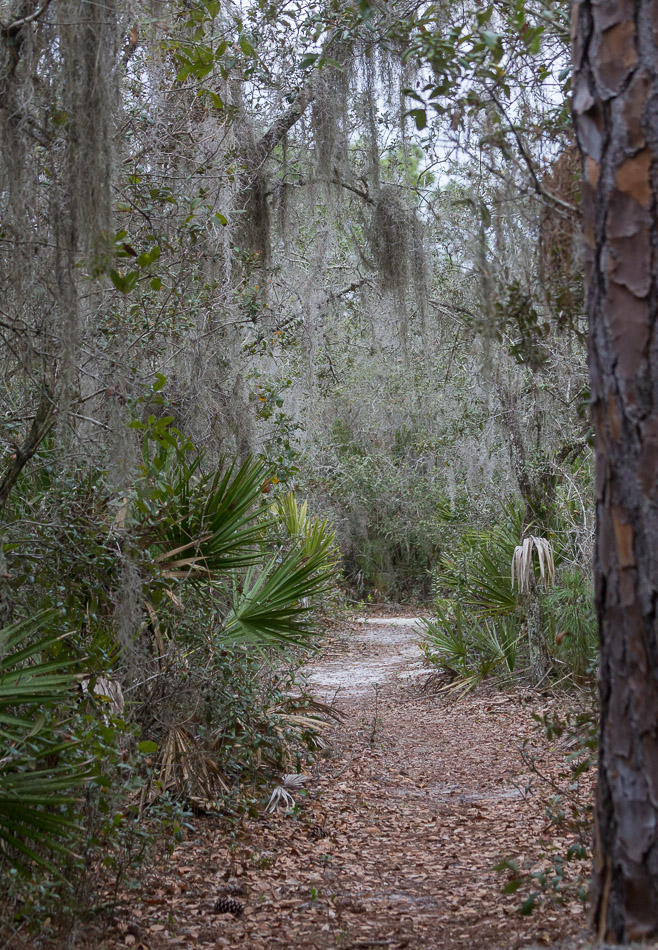
Near the stream, we found an ebony jewelwings (by quoderat)
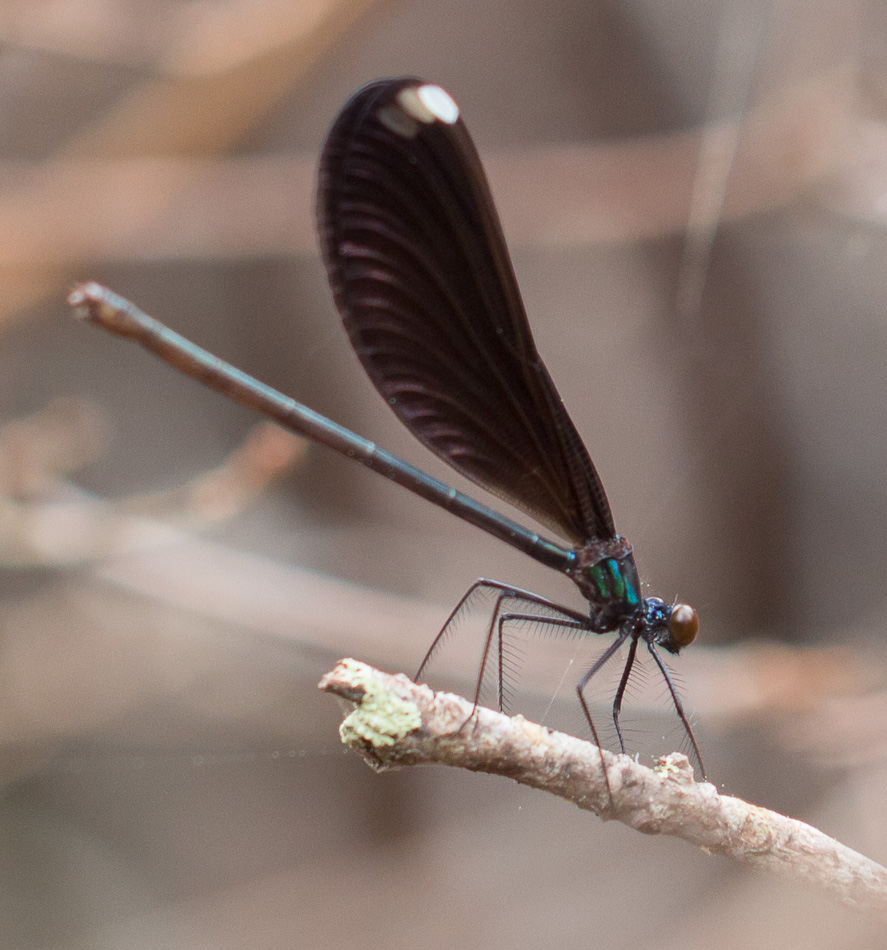
And a frog (also by quoderat)
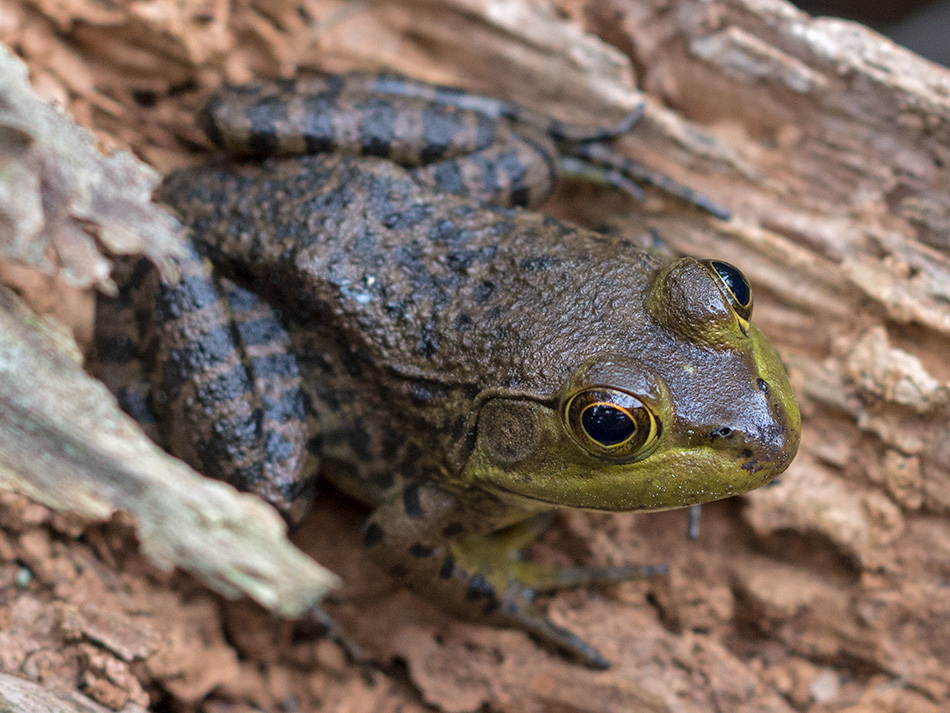
We first visited Highlands Hammock State Park a year or two ago. We returned briefly yesterday for a picnic lunch and a walk at our favorite spot from last time, the Cypress Swamp boardwalk. The water level was lower this time than last, with this visit farther into the drier season than before.
The popular boardwalk, after a lovely wide section with angled benches, loses much of its width and one of its side rails. This makes the swamp seem much more intimate, without that mental barrier between you and the alligators. (We saw two.) (by quoderat)

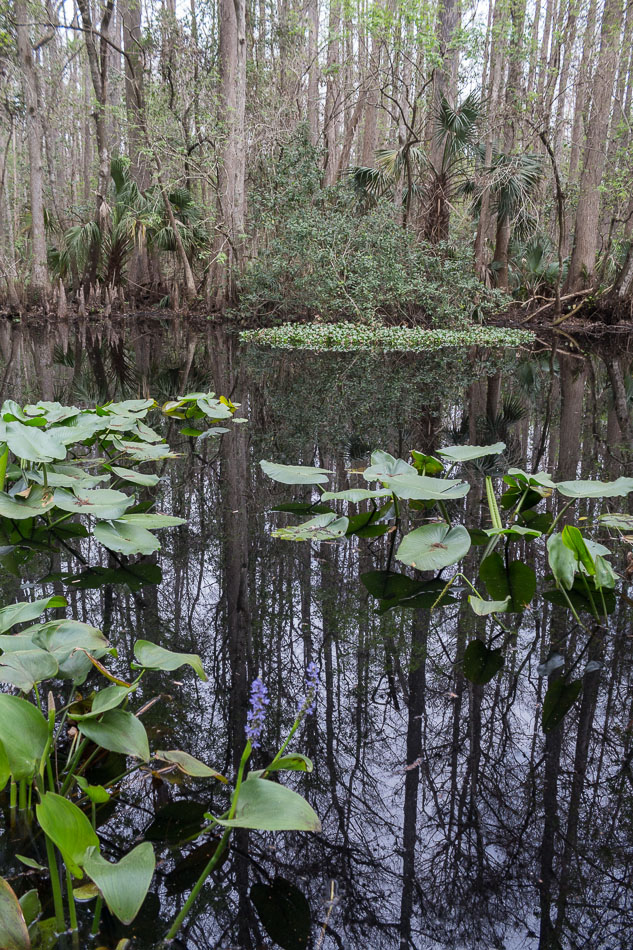
Besides the alligators, we saw a large spider and a small flock of ibis (both by zanna)
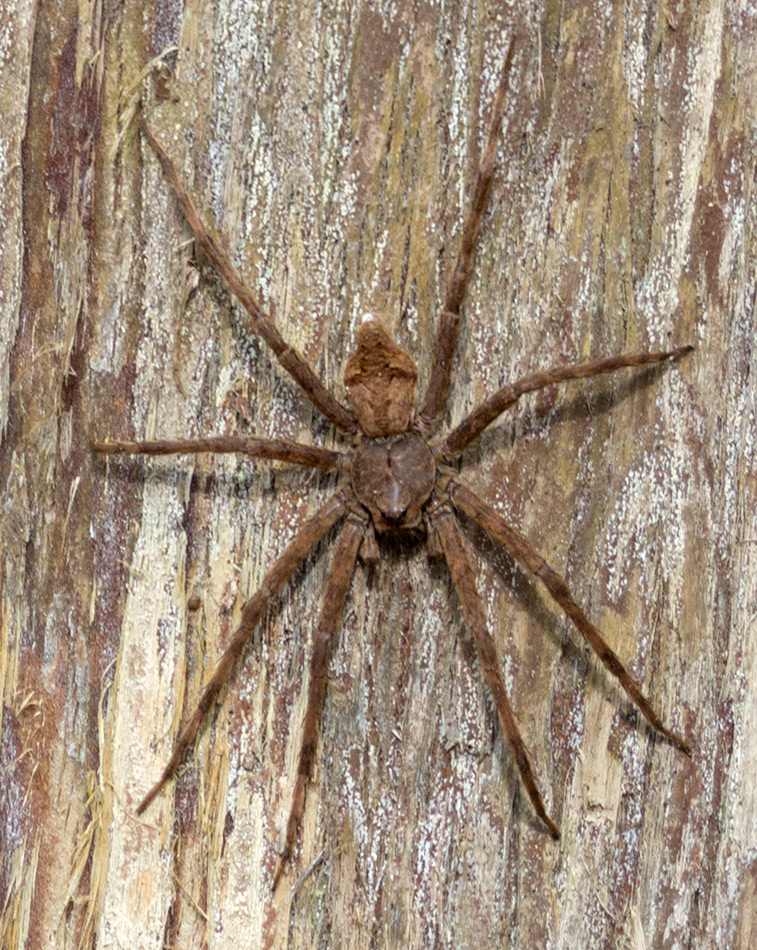
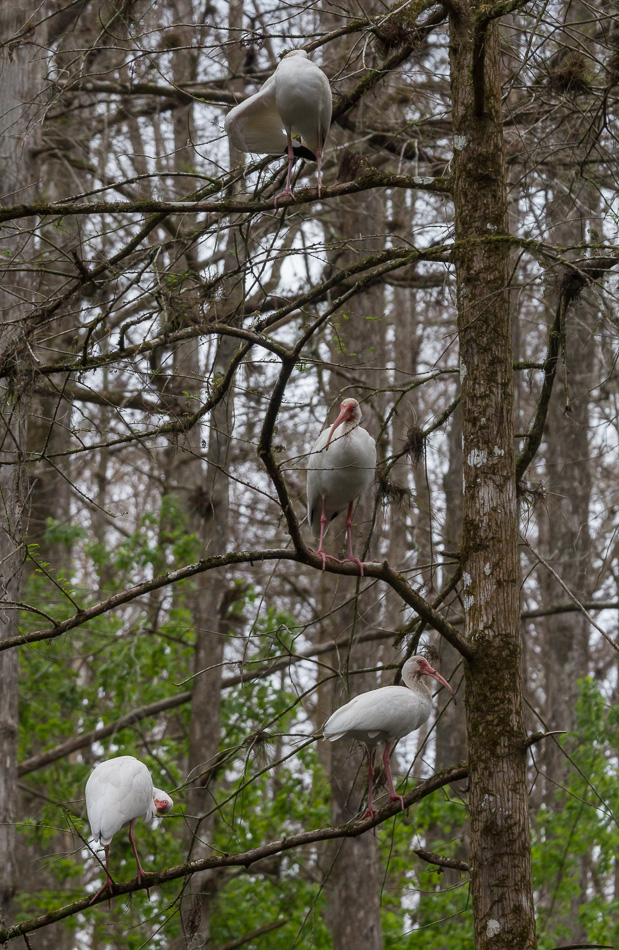
Florida Hikes reports that they enjoyed a wild orange milkshake, picked from trees in the park that are descendents from an earlier use of the land as an orchard, but we are zero for two for having the concession stand open in the first place. We did however stroll through the small Civilian Conservation Corps Museum. My favorite part was probably a map with pins for all of the work camps across the country.
By September 1935 over 500,000 young men had lived in CCC camps, most staying from six months to a year. The work focused on soil conservation and reforestation. Most important, the men planted millions of trees on land made barren from fires, natural erosion, or lumbering—in fact, the CCC was responsible for over half the reforestation, public and private, done in the nation’s history. Corpsmen also dug canals and ditches, built over thirty thousand wildlife shelters, stocked rivers and lakes with nearly a billion fish, restored historic battlefields, and cleared beaches and campgrounds.
In less than 10 years, the Civilian Conservation Corps built more than 800 parks and planted nearly 3 billion trees nationwide. [history.com]
Like many state parks in Florida, Jonathan Dickinson conducts prescribed burns to preserve the habitat as closely as possible to how it evolved; without these periodic controlled conflagrations, oaks would take over the landscape, dominating and crowding out the pines which depend on fire for their survival.
Here is what the landscape looks like after a burn. The small fire-denuded palms in the photo are still alive and will grow back fine in a few months. They are made for fire. (Photo by quoderat.)
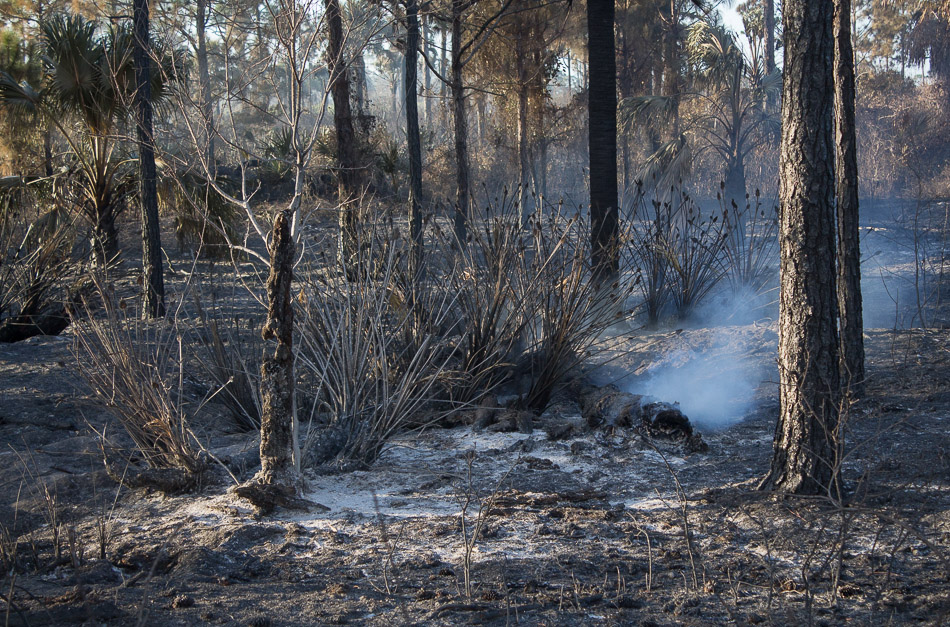
We also climbed a mountain today. Well, what passes for a mountain in South Florida. Hobe Mountain rises all of 86 feet (no, that’s not a typo) above the landscape and is the highest naturally-occurring, uh, summit in South Florida. We barely made it up such an intimidating ascent, let me tell you.
Here is a photo of the picturesque boardwalk leading to the observation tower. (Photo by zanna.)
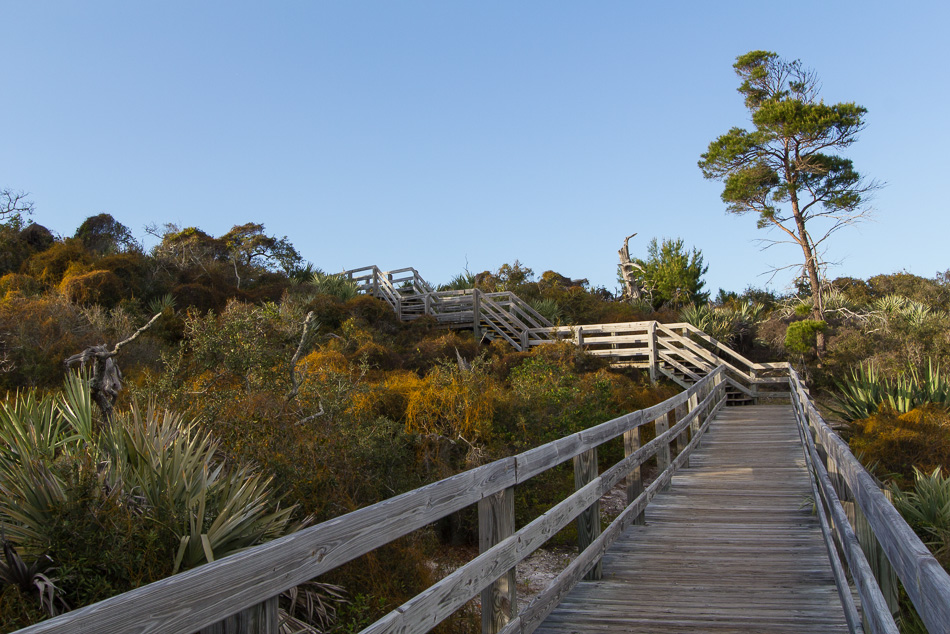
The smoke from prescribed burns can be seen lingering. (Photo by zanna.)
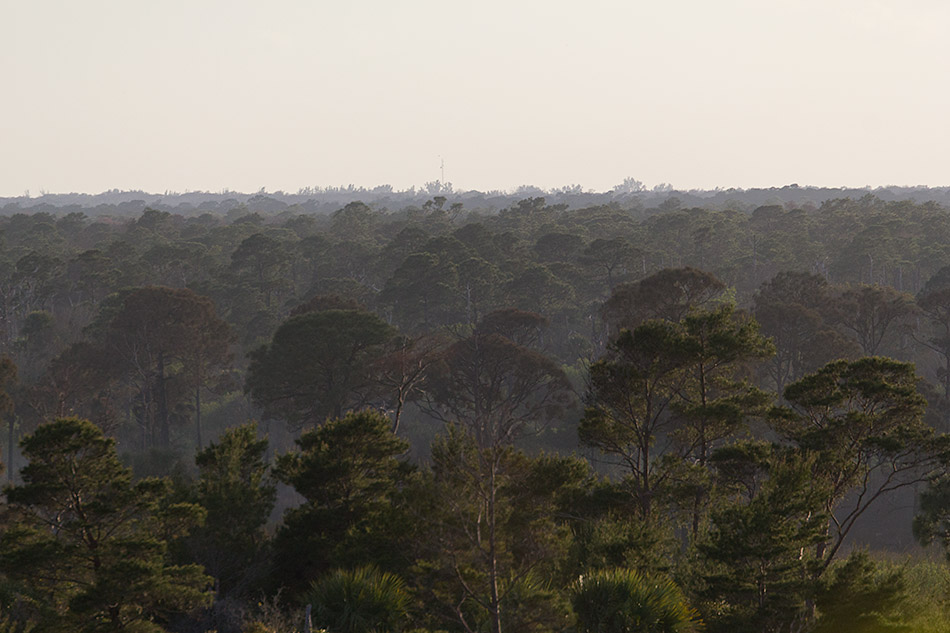
Florida’s undifferentiated horizon. The horizon in this photo is approximately 13 miles away.
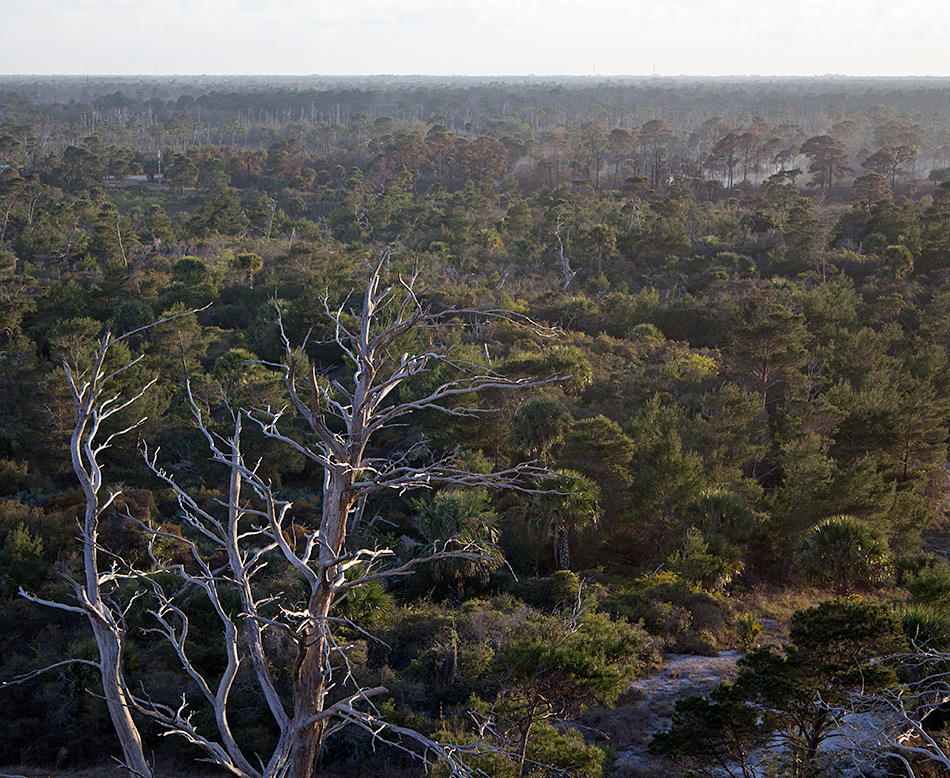
We also stopped by Hobe Sound National Wildlife Refuge for a brief visit — even briefer than we initially planned as the trail we intended to walk was closed. Zanna was working on drinking some sweet tea — very important! — so all photos are by quoderat.
A bee paused long enough in a beach sunflower for a photo.
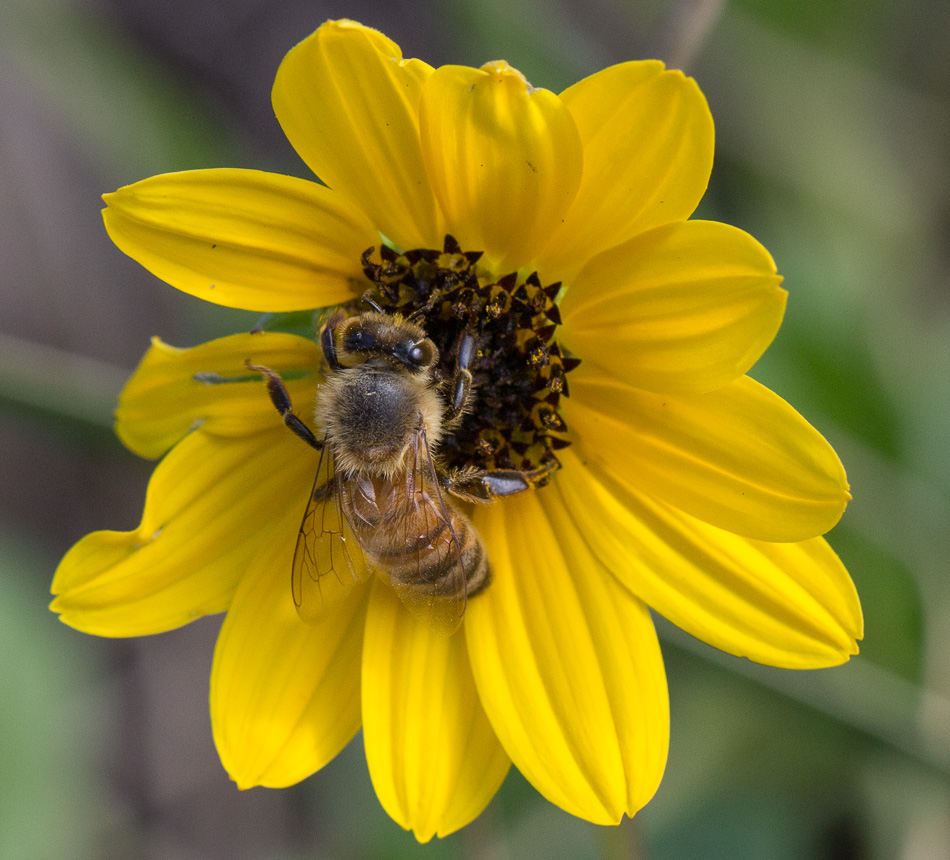
The beach was littered with Portuguese man o’ war jellyfish remains. These can administer (even after death) nasty, painful stings with their venom being around 75 percent as toxic as cobra venom. Not a good day for a swim.
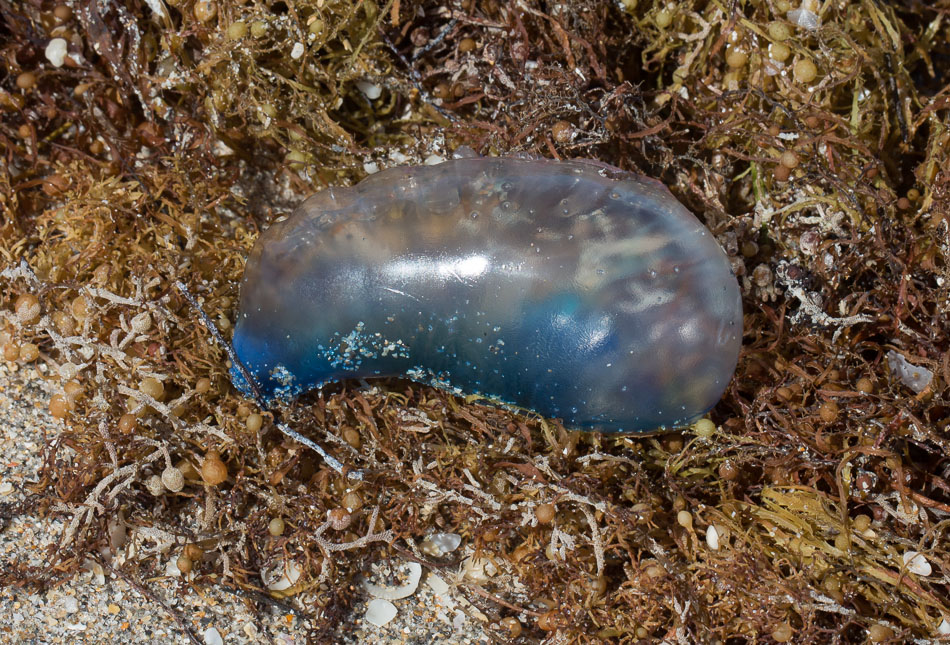
The Atlantic coast of Florida has a much different character than the calmer Gulf coast. The waves are larger and the water depth increases more quickly as you move away from the beach.
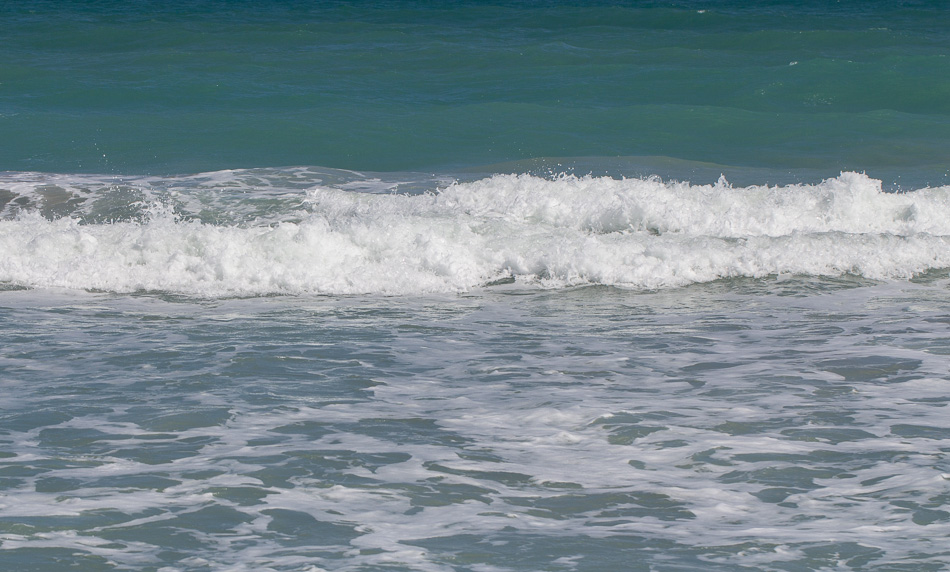
Today we went to Grassy Waters Preserve, which according to its site, “serves as the freshwater supply for the City of West Palm Beach and the towns of South Palm Beach and Palm Beach Island.”
It is wet prairie and cypress swamp primarily. Here is where the wet prairie abuts the cypress swamp. (Photo by zanna.)
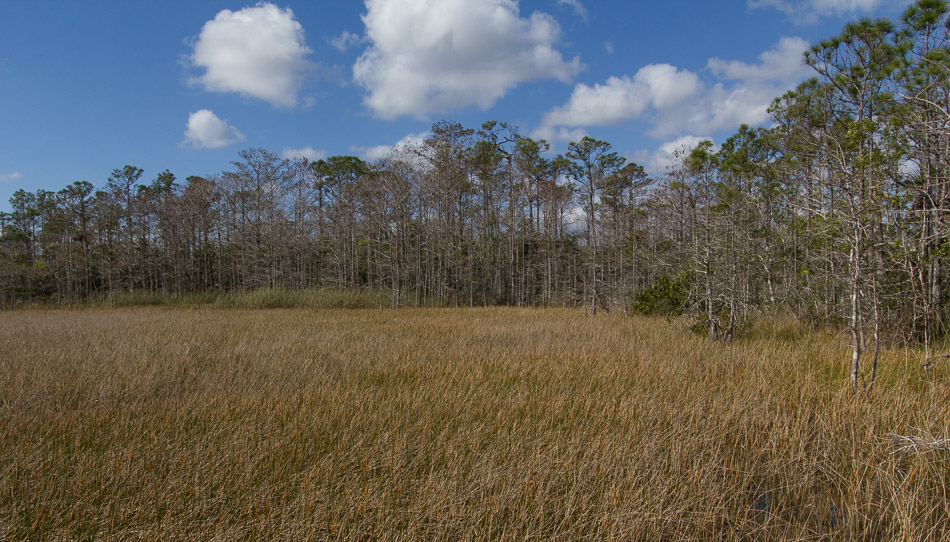
And it is an entirely different world under the cypress. (Photo by zanna.)
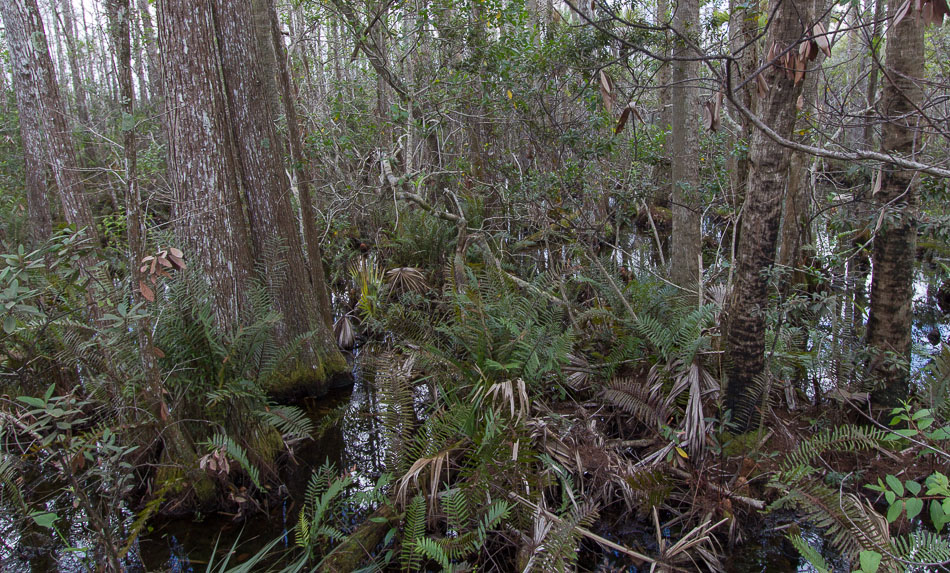
We found a motionless frog resting near the boardwalk. We suspect is is a pig frog, though it could also be a bullfrog. (Photo by quoderat.)
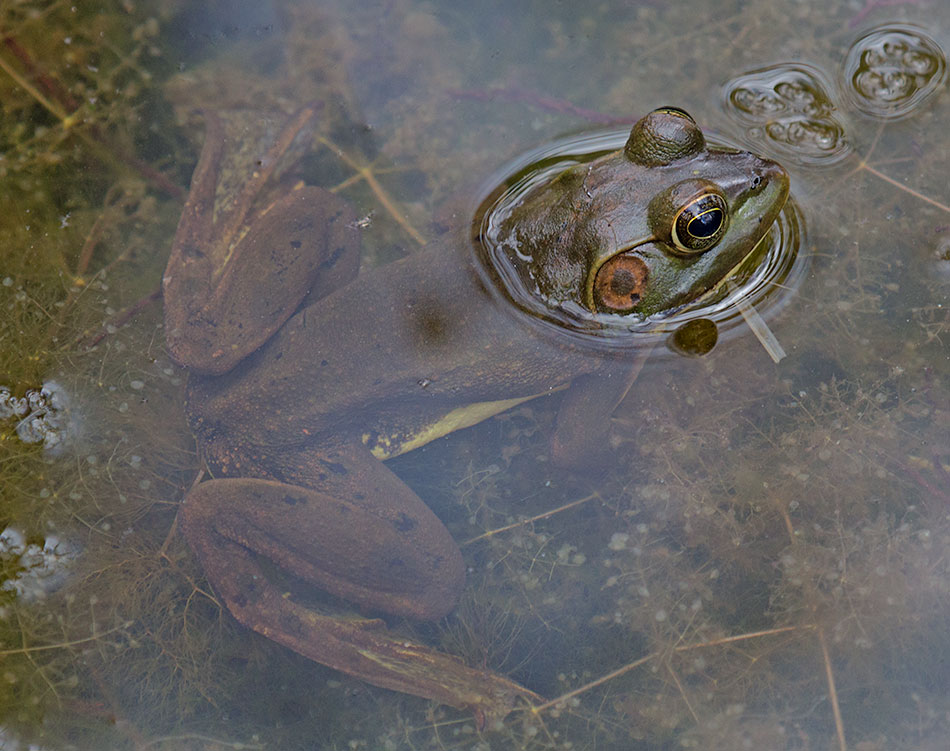
There was also a small alligator near the staff boat launch area. (Photo by quoderat.)
